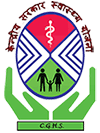Unveiling the Truth: Understanding Dry Eye Syndrome in Women
Dry eye syndrome may seem like a minor inconvenience, but for many women, it’s a daily struggle that impacts their quality of life. In this blog, we’ll delve into the prevalence of dry eye syndrome in women, shedding light on this common yet often misunderstood condition.
What is Dry Eye Syndrome?
Dry eye syndrome occurs when the eyes don’t produce enough tears or when the tears evaporate too quickly. This can lead to symptoms such as itching, burning, redness, sensitivity to light, and blurred vision. While anyone can experience dry eye syndrome, it is more common in women, especially as they age.
Prevalence in Women
Studies have shown that women are more likely to develop dry eye syndrome than men, with hormonal changes playing a significant role. Factors such as pregnancy, menopause, and the use of hormonal contraceptives can affect tear production and composition, increasing the risk of dry eyes.
Hormonal Changes
During pregnancy and menopause, fluctuations in hormone levels can lead to changes in tear production and quality. Estrogen, in particular, plays a crucial role in maintaining the health of the lacrimal glands, which produce tears. As estrogen levels decline, women may experience dryness and irritation in their eyes.
Contact Lens Wear
Many women prefer to wear contact lenses for vision correction, but this can also contribute to dry eye syndrome. Contact lenses can reduce the amount of oxygen reaching the surface of the eye, leading to dryness and discomfort, especially with prolonged wear.
Environmental Factors
Environmental factors such as dry air, smoke, wind, and air conditioning can exacerbate dry eye symptoms in women. Spending long hours in front of screens, whether for work or leisure, can also contribute to digital eye strain and dryness.
Managing Dry Eye Syndrome
While dry eye syndrome can be frustrating, there are several ways to manage and alleviate symptoms. This includes using artificial tears or lubricating eye drops, practicing good eyelid hygiene, staying hydrated, and taking regular breaks from screens.
Seeking Professional Help
If dry eye symptoms persist or worsen, it’s essential to seek professional help from an eye care specialist. They can perform a comprehensive eye examination to determine the underlying cause of the dryness and recommend appropriate treatment options, such as prescription eye drops or procedures to block tear ducts.
In conclusion, dry eye syndrome is a prevalent condition among women, often influenced by hormonal changes, contact lens wear, and environmental factors. By understanding the causes and symptoms of dry eye syndrome, women can take proactive steps to manage their eye health and enjoy clear, comfortable vision.

